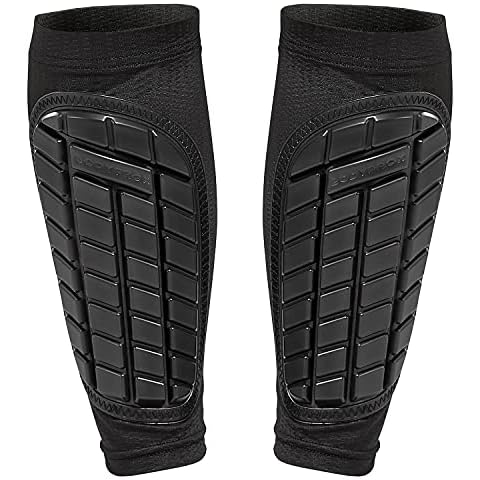Buyer's Guide: Best Soccer Shin Guards
Introduction
Soccer is a beloved sport all around the world, but it's important to have the right equipment in order to play safely and comfortably. Shin guards, in particular, are an essential piece of protective gear that can help prevent painful and potentially damaging injuries. But with so many different options available, choosing the right shin guards can be overwhelming. In this article, we'll discuss the factors to consider when selecting soccer shin guards and offer some helpful tips to make the process easier.
Anatomy of a Shin Guard
Before we get into the specifics of choosing soccer shin guards, it's important to understand the basic anatomy of these protective devices. Shin guards typically consist of three main parts: a hard outer shell, a foam or plastic padding layer, and a strap or sock that secures the guard in place.
The outer shell is the hard, impact-resistant layer that protects your shin from the force of a kick or collision. This layer is typically made from a tough, lightweight material such as polypropylene or high-density polyethylene. The padding layer, meanwhile, provides additional cushioning and helps to distribute the force of an impact more evenly across the surface of the guard. This layer is typically made from foam or plastic, and its thickness and density will vary depending on the type of shin guard.
The strap or sock is the third component of a shin guard, and it's what keeps the guard securely attached to your leg. Straps are typically adjustable, allowing you to customize the fit of the guard, while socks are a one-size-fits-all option that provides a snug, sock-like fit.
Size and Fit
One of the most important factors to consider when choosing soccer shin guards is size and fit. After all, a guard that's too small or too large won't provide adequate protection, and it can even cause discomfort or interfere with your ability to move freely on the field.
To find the right size, you'll need to measure the distance from the top of your ankle to the bottom of your knee. Most shin guard manufacturers will provide size charts that indicate which guard size is appropriate for a given measurement. If you're unsure of your size, it's always best to err on the side of caution and choose a guard that's slightly larger rather than smaller.
In terms of fit, you'll want to choose a guard that stays securely in place without slipping or sliding around. If you're using straps, make sure to adjust them so that the guard sits snugly against your leg without feeling too tight or restrictive. If you're using a sock-style guard, try it on and make sure it feels comfortable and secure before purchasing.
Level of Protection
Another important factor to consider when choosing soccer shin guards is the level of protection they offer. Shin guards are available in a range of sizes and styles, each with its own unique features and benefits.
For example, some guards are designed for use in youth or amateur leagues, where the risk of injury is lower and the rules may not require as much protective gear. These guards tend to be smaller and lighter, and they often have less padding than more robust guards designed for professional or high-level play.
At the other end of the spectrum, you'll find professional-grade shin guards that offer maximum protection and support. These guards are typically larger and heavier, and they often have additional features such as removable ankle guards or reinforced toe caps. These guards are designed to withstand the rigors of high-level competition, and they can provide extra peace of mind for players who are at greater risk of injury.
Comfort and Breathability
In addition to size, fit, and level of protection, you'll also want to consider comfort and breathability when choosing soccer shin guards. After all, you'll be wearing these guards for extended periods of time, and you want to make sure they don't cause discomfort or irritation.
One way to ensure comfort is to choose shin guards that are made from breathable materials. Some guards are equipped with ventilation holes or mesh panels that allow air to circulate, which can help prevent sweating and keep your legs cool and comfortable. This is particularly important in hot or humid conditions, where excessive moisture can lead to chafing or irritation.
Another factor to consider is the type of padding used in the guard. Some shin guards use foam padding, which is soft and flexible and can help reduce impact force. Other guards use plastic padding, which is harder and more rigid but can provide greater support and protection. The right padding will depend on your personal preference and the type of play you're engaging in, so it's worth trying out a few different options to see what feels best for you.
Conclusion
In conclusion, choosing the right soccer shin guards is an important decision that can help keep you safe and comfortable on the field. By considering factors such as size and fit, level of protection, and comfort and breathability, you can find a guard that meets your needs and preferences. With the right shin guards, you'll be able to focus on the game and enjoy all the thrills and excitement of soccer without worrying about injuries.











